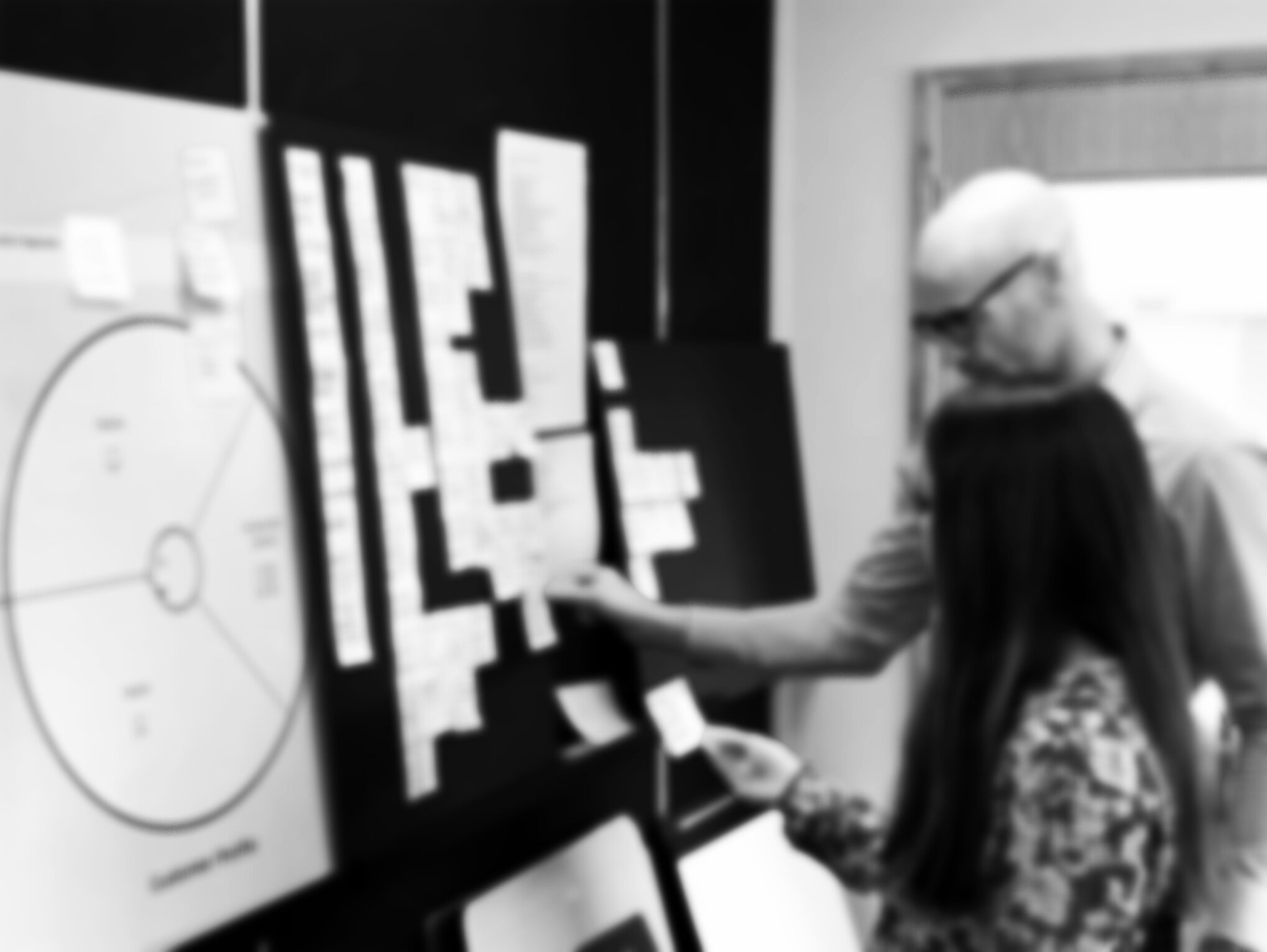
Process
Process makes perfect
_
Collaboration
“No input, No output”
Joe Strummer • The Clash
I attribute the success of my digital design work to my collaborative approach to process with my clients, their teams and their users. Take a look at how I achieve that with some of the methods, thinking and tools that I use in my design process.
1. User Centred Design
User Centred Design is at the heart of my design process, it is a circular six step process (Empathise, Define, Ideate, Prototype, Test and Implement) which is designed to focus on a the needs and values of the end user first.
This methodology allows me to test a hypothesis quickly on real users at design, through rapid prototyping. It ensures we are addressing the right user needs before the digital product enters development, a very cost effective approach to innovation.
2. Value Proposition Design
Developed by Dr Alexander Osterwalder, the Value Proposition Canvas is particularly useful in helping start ups to understand the needs and values of their end users. It allows them to position their digital product correctly in the market they intend to enter and achieve best fit, in what can be a delicate but highly useful process.
3. Design Systems
I start every project with an atomic design system, this acts as the foundations for the brand’s UI and the digital brand guideline for the project.
To start with, we define ‘atomic’ elements; typographic hierarchy; brand and system colours; styles and surfaces, with these atomic elements in place, I can then design ‘molecules’ e.g buttons and fields, ‘organisms’ e.g a form and finally templates e.g a contact page.
Every possible interface starts with the the system, it keeps the UI unified and stops it from straying in style. Keeping the respective brand, strong, transparent and unified.
4. Design Tools
Design tools come in handy between steps three and four of the User Centred Design process. I use the industry standard design tools ‘Sketch’ and ‘Figma’ to design interface as they are lightweight, specific for the task and support my UI design system, meaning I can create watertight, on brand design which can be effortlessly handed off to the development team when it comes to the build.
5. Prototyping
Prototyping is the fourth stage of the User Centred Design process, this is a vital stage of a the design process as it is the point at which we can mock up interactivity of a digital product in order to test it on our audience to see if what we hypothesised, is successfully addressed by the design. Take a look at some of the tools I use to do this, below.






